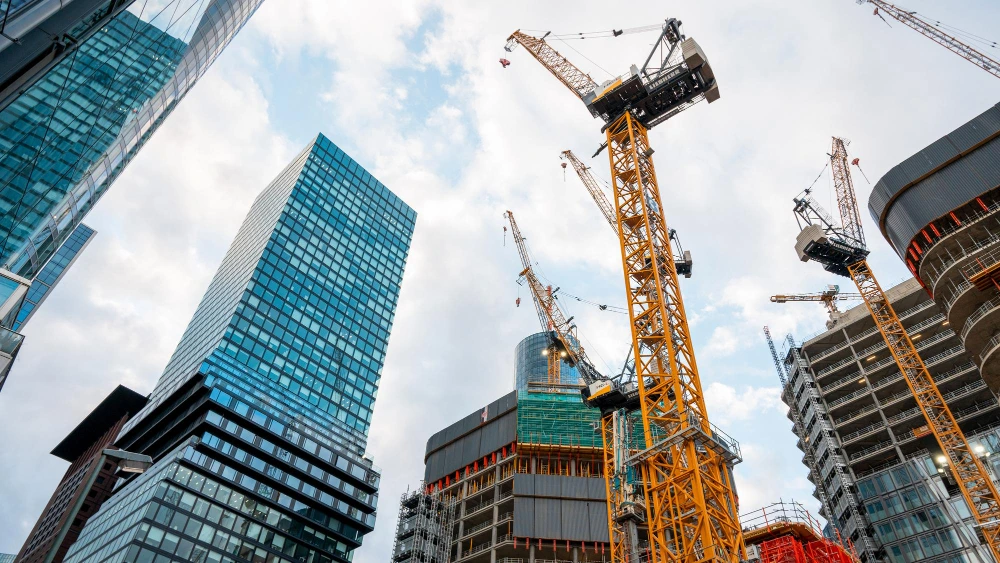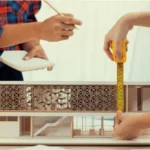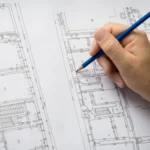Commercial buildings don’t start with blueprints. They start with questions.
Where should we build?
How much will it cost?
Who can we trust to get it done on time?
If you’ve ever been involved in a commercial project, whether it’s a co-working hub, a retail outlet, or a hospital, you already know this: construction is far more than just pouring concrete.
It is a well-planned series of decisions, licenses, supplies, people, and due dates. The whole project may stall if even one of those components is misaligned. So, in this guide, we will walk you through its entire journey step-by-step, helping you see what really happens beneath the concrete and steel.
What Is Commercial Construction?
Commercial construction refers to the planning and building of structures used for business or public purposes. Unlike residential buildings, these are designed with utility, footfall, and compliance in mind. Offices, shopping malls, hotels, hospitals, and warehouses, each of these projects has different technical demands, but they all fall under this category.
If you’re working with a commercial construction company, here’s what you’re likely to be dealing with:
- Office complexes: Think shared workspaces or corporate HQs
- Healthcare facilities: Hospitals, clinics, diagnostic centres
- Retail & hospitality: Restaurants, showrooms, hotels
- Industrial & logistics: Warehouses, distribution hubs
- Institutional buildings: Schools, colleges, auditoriums
And given the way Mohali is growing, more developers are turning to experienced commercial builders to bring their large-scale projects to life.
Commercial Construction: One Size Doesn’t Fit All
It’s not just about size. It’s about complexity, too. Commercial construction varies in scale and scope:
| Scale | Size | Example | Timeline |
| Small-scale | Under 500 sq. ft. | Shop fit-outs, HVAC upgrades | A few weeks |
| Mid-scale | 500–50,000 sq. ft. | Restaurants, medical clinics | Few months |
| Large-scale | 50,000+ sq. ft. | Office towers, malls, and hotels | Over a year, easily |
The bigger the project, the higher the stakes. And yes, the more critical it becomes to hire a construction company that can navigate the terrain.
Who’s Involved And What They Do
It’s not a solo act. Behind every successful commercial project is a line-up of specialists, each bringing something to the table:
- Client/Developer: The visionary (and the one footing the bill).
- Architects & Engineers: Design the blueprint and ensure everything’s structurally sound.
- Commercial Builders: Coordinates the entire site and daily operations.
- Authorities & Inspectors: Approve permits and make sure you’re building by the book.
- Project Manager: The person who keeps it all from spiralling out of control.
Trust me, when each piece clicks, things run a lot smoother.
The 7-Phase Commercial Construction Process
Here’s the breakdown of how a typical commercial project unfolds:
1. Development & Planning
- Choose the right site (check soil, access, zoning)
- Finalise the budget (pro tip: leave a 10–15% contingency)
- Lock in your core team early!
2. Pre-Design
- Define your needs: room sizes, utility requirements, materials
- Draft the initial budget and timeline
3. Design Phase
- Architects create schematics
- Engineers handle structural layouts, drainage plans, and utility mapping
4. Pre-Construction
- Secure permits and insurance
- Finalise commercial builders and suppliers
5. Procurement
- Purchase materials and equipment
- Keep a buffer, prices and availability fluctuate more than you’d think
6. Construction
This is where real action happens:
- Site preparation: Clear the land, lay the utilities
- Framing: Build your skeleton – steel or concrete, mostly
- Fit-out: Roofing, wiring, plumbing, HVAC, interiors
- Landscaping: For aesthetics and last-mile finishes
7. Post-Construction
- Walk-throughs and defect fixes (a.k.a. the punch list)
- Final inspection and occupancy certificate
And that’s how you get from dirt to doors open.
Cost Drivers & Real-World Challenges
What Drives the Budget?
- Materials – Steel, cement, glass, and more
- Labour – Skilled trades are expensive (and rightly so)
- Equipment – Cranes, pavers, and site machinery aren’t cheap
- Compliance – Fire safety, accessibility, and environmental codes
What Goes Wrong And How To Fix It
| Challenge | Solution |
| Budget overruns | Add a contingency and track in real time |
| Timeline delays | Use prefabricated elements where possible |
| Site safety issues | Conduct daily briefings and safety audits |
| Regulatory hurdles | Get approvals in stages, not at the end |
Commercial vs Residential vs Industrial Construction
Here’s a quick comparison:
| Aspect | Commercial | Residential | Industrial |
| Materials | Steel, concrete | Brick, wood | Reinforced concrete, metal |
| Regulations | Strict fire exits, accessibility | More relaxed | Heavy compliance hazards |
| Equipment | Cranes, lifts, telehandlers | Light tools | Specialised machinery |
| Usage | For business/public | For families | For manufacturing, logistics |
The complexity in commercial construction is real, and so is the responsibility.
Best Practices That Make A Difference
- Adopt design-build: One team handles both design and execution = fewer disputes
- Use modern tech: BIM models, drone surveys, digital timelines – worth the investment.
- Prioritise durability: Choose long-lasting materials to cut future maintenance.
- Be sustainable: Think energy-efficient HVAC, smart lighting, and low-waste building.
- Insure everything: Builder’s risk, liability, workers’ comp – don’t cut corners.
What Sets RS Builders Apart
Now, let’s talk about what we do differently.
At RS Builders, we don’t just tick boxes. We build spaces that solve real problems. Whether it’s reducing build time with prefabrication, managing costs through live dashboards, or handling contaminated soil before it becomes a crisis, we bring foresight to every phase.
Our project, HEXALACE in Chandigarh, used a breathable façade system to improve energy efficiency. And we’re proud of how we turned Meltcrete and The Ribbon House into examples of form meeting function – beautiful on the outside, smart on the inside.
We know the unpredictable will happen. Our job is to make sure it doesn’t stop you from moving forward.
Final Thoughts: It’s More Than Just Construction
Commercial projects aren’t just about bricks and mortar. They’re about creating value, economic, social, and visual. From offices that inspire productivity to hospitality spaces that host memories, your building needs to do more than just stand tall.
And that’s where experienced builders in Mohali like RS Builders come in. We offer end-to-end expertise in commercial construction, taking on everything from blueprint to ribbon cutting.
Need a partner who understands both design and delivery? Let’s build something that lasts.
FAQs
- What is considered commercial construction?
Commercial construction includes buildings used for business or public purposes, like offices, malls, hotels, hospitals, and warehouses.
- How long does it take to complete a commercial construction project?
It depends on the scale. Small projects may take weeks, while large builds like malls or office towers can take a year or more.
- What is the difference between commercial and residential construction?
Commercial projects follow stricter codes, use industrial-grade materials like steel and concrete, and are designed for public or business use. Residential focuses on homes and simpler tools.
- What are the biggest challenges in commercial construction?
Common challenges include budget overruns, permit delays, material price fluctuations, and coordination between multiple contractors.
- Why should I hire RS Builders for my commercial project?
RS Builders offers end-to-end expertise, real-time cost tracking, preemptive problem-solving, and a strong portfolio of commercial projects across Mohali and beyond.






